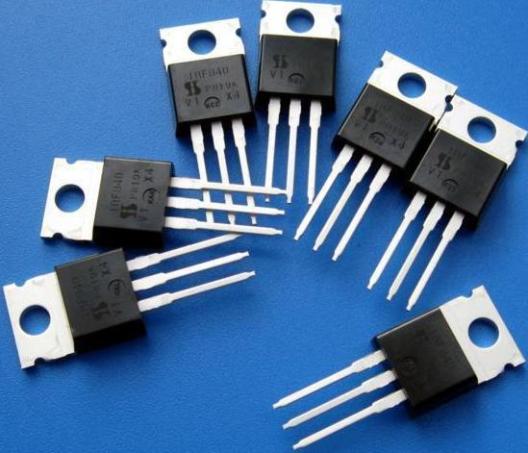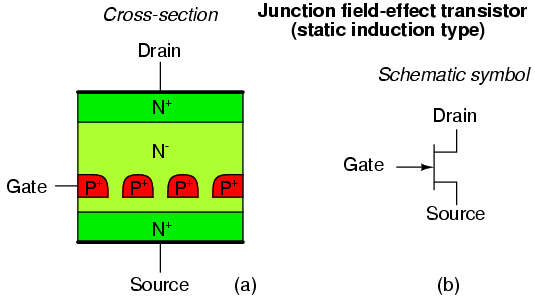Gta vice city pc game kaise download kare. FET is an acronym used for “field effect transistor”. It is a three terminal unipolar device in which conduction is manipulated with the help of applied electric field under reversed biased junction. Chemical field-effect transistor and Ionophore See more » ISFET. An ISFET is an ion-sensitive field-effect transistor, that is a field-effect transistor used for measuring ion concentrations in solution; when the ion concentration (such as H+, see pH scale) changes, the current through the transistor will change accordingly.
- Ion Sensing Field Effect Transistor (ISFET). Δϕ= RT/F ln (c 1 /c 2). R is the gas constant, T the absolute temperature (K) and F the Faraday constant and c i, are ion concentrations in the solution and oxide. 2 Using hydrogen ions can be used to measure pH1 and DNA.
- 5.11 THE JUNCTION FIELD-EFFECT TRANSISTOR (JFET) The junction field-effect transistor, or JFET, is perhaps the simplest transistor available. It has some important characteristics, notably a very high input resistance. Unfortunately, however (for the JFET), the MOSFET has an even higher input resistance.
A Field Effect Transistor Fet Is Used When
- Semiconductor Devices Tutorial
- Semiconductor Devices Resources
- Selected Reading
A Field Effect Transistor (FET) is a three-terminal semiconductor device. Its operation is based on a controlled input voltage. By appearance JFET and bipolar transistors are very similar. However, BJT is a current controlled device and JFET is controlled by input voltage. Most commonly two types of FETs are available.
- Junction Field Effect Transistor (JFET)
- Metal Oxide Semiconductor FET (IGFET)
Junction Field Effect Transistor
The functioning of Junction Field Effect Transistor depends upon the flow of majority carriers (electrons or holes) only. Basically, JFETs consist of an N type or P type silicon bar containing PN junctions at the sides. Following are some important points to remember about FET −
Gate − By using diffusion or alloying technique, both sides of N type bar are heavily doped to create PN junction. These doped regions are called gate (G).
Source − It is the entry point for majority carriers through which they enter into the semiconductor bar.
Drain − It is the exit point for majority carriers through which they leave the semiconductor bar.
Channel − It is the area of N type material through which majority carriers pass from the source to drain.
There are two types of JFETs commonly used in the field semiconductor devices: N-Channel JFET and P-Channel JFET.
N-Channel JFET
It has a thin layer of N type material formed on P type substrate. Following figure shows the crystal structure and schematic symbol of an N-channel JFET. Then the gate is formed on top of the N channel with P type material. At the end of the channel and the gate, lead wires are attached and the substrate has no connection.
When a DC voltage source is connected to the source and the drain leads of a JFET, maximum current will flow through the channel. The same amount of current will flow from the source and the drain terminals. The amount of channel current flow will be determined by the value of VDD and the internal resistance of the channel.
A typical value of source-drain resistance of a JFET is quite a few hundred ohms. It is clear that even when the gate is open full current conduction will take place in the channel. Essentially, the amount of bias voltage applied at ID, controls the flow of current carriers passing through the channel of a JFET. With a small change in gate voltage, JFET can be controlled anywhere between full conduction and cutoff state.
P-Channel JFETs

It has a thin layer of P type material formed on N type substrate. The following figure shows the crystal structure and schematic symbol of an N-channel JFET. The gate is formed on top of the P channel with N type material. At the end of the channel and the gate, lead wires are attached. Rest of the construction details are similar to that of N- channel JFET.
Normally for general operation, the gate terminal is made positive with respect to the source terminal. The size of the P-N junction depletion layer depends upon fluctuations in the values of reverse biased gate voltage. With a small change in gate voltage, JFET can be controlled anywhere between full conduction and cutoff state.
Output Characteristics of JFET
The output characteristics of JFET are drawn between drain current (ID) and drain source voltage (VDS) at constant gate source voltage (VGS) as shown in the following figure.
Initially, the drain current (ID) rises rapidly with drain source voltage (VDS) however suddenly becomes constant at a voltage known as pinch-off voltage (VP). Above pinch-off voltage, the channel width becomes so narrow that it allows very small drain current to pass through it. Therefore, drain current (ID) remains constant above pinch-off voltage.
Parameters of JFET
The main parameters of JFET are −
- AC drain resistance (Rd)
- Transconductance
- Amplification factor
AC drain resistance (Rd) − It is the ratio of change in the drain source voltage (ΔVDS) to the change in drain current (ΔID) at constant gate-source voltage. It can be expressed as,

Rd = (ΔVDS)/(ΔID) at Constant VGS
Transconductance (gfs) − It is the ratio of change in drain current (ΔID) to the change in gate source voltage (ΔVGS) at constant drain-source voltage. It can be expressed as,
gfs = (ΔID)/(ΔVGS) at constant VDS
Amplification Factor (u) − It is the ratio of change in drain-source voltage (ΔVDS) to the change in gate source voltage (ΔVGS) constant drain current (ΔID). It can be expressed as,
u = (ΔVDS)/(ΔVGS) at constant ID
See also ISFET A ChemFET is a chemically-sensitive field-effect transistor, that is a field-effect transistor used as a sensor for measuring chemical concentrations in solution.[1]
11 relations: Chemiresistor, Electronic nose, EOSFET, Field-effect transistor, Ionophore, ISFET, Quaternary ammonium cation, Sensor, Tetraoctylammonium bromide, Threshold voltage, Transistor.
Chemiresistor
A chemiresistor is a material that changes its electrical resistance in response to changes in the nearby chemical environment.
New!!: Chemical field-effect transistor and Chemiresistor · See more »
Electronic nose
An electronic nose is a device intended to detect odors or flavors.
New!!: Chemical field-effect transistor and Electronic nose · See more »
EOSFET
An EOSFET or electrolyte–oxide–semiconductor field-effect transistor is a FET, like a MOSFET, but with the metal replaced by electrolyte solution for the detection of neuronal activity.
New!!: Chemical field-effect transistor and EOSFET · See more »
Field-effect transistor
The field-effect transistor (FET) is a transistor that uses an electric field to control the electrical behaviour of the device.
New!!: Chemical field-effect transistor and Field-effect transistor · See more »

Ionophore
An ionophore is a chemical species that reversibly binds ions.
New!!: Chemical field-effect transistor and Ionophore · See more »

ISFET
An ISFET is an ion-sensitive field-effect transistor, that is a field-effect transistor used for measuring ion concentrations in solution; when the ion concentration (such as H+, see pH scale) changes, the current through the transistor will change accordingly.
New!!: Chemical field-effect transistor and ISFET · See more »
Quaternary ammonium cation
Quaternary ammonium cations, also known as quats, are positively charged polyatomic ions of the structure, R being an alkyl group or an aryl group.
New!!: Chemical field-effect transistor and Quaternary ammonium cation · See more »
Sensor
In the broadest definition, a sensor is a device, module, or subsystem whose purpose is to detect events or changes in its environment and send the information to other electronics, frequently a computer processor.
New!!: Chemical field-effect transistor and Sensor · See more »
Tetraoctylammonium bromide
Tetraoctylammonium bromide (TOAB or TOABr) is a quaternary ammonium compound with the chemical formula: 4N Br.
A Field Effect Transistor (fet) Mcq

New!!: Chemical field-effect transistor and Tetraoctylammonium bromide · See more »
Threshold voltage
The threshold voltage, commonly abbreviated as Vth, of a field-effect transistor (FET) is the minimum gate-to-source voltage VGS (th) that is needed to create a conducting path between the source and drain terminals.
Download forza horizon 4 for mac os. New!!: Chemical field-effect transistor and Threshold voltage · See more »
Transistor
A transistor is a semiconductor device used to amplify or switch electronic signals and electrical power.
New!!: Chemical field-effect transistor and Transistor · See more »
Redirects here:
CHEMFET, Chemical field effect transistor, Chemically-sensitive field-effect transistor.
What Is A Field Effect Transistor
References
Npn Transistor
[1] https://en.wikipedia.org/wiki/Chemical_field-effect_transistor
